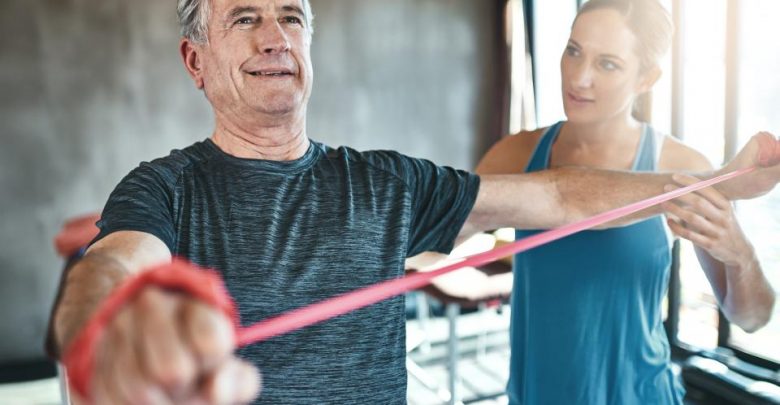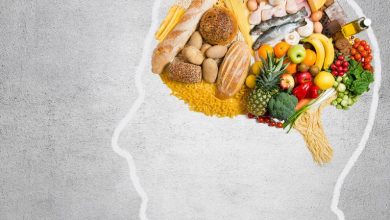Alternative Health NewsExercise & Weight LossFitness & WellnessHealthy Lifestyle
Functional Training for Active, Independent Living

Healthy aging is more than the absence of disease, according to the World Health Organization: “For most older people, the maintenance of functional ability has the highest importance” (WHO 2015).
Colin Milner, founder and CEO of the International Council on Active Aging in Vancouver, British Columbia, echoes that statement: “When looking at the healthy aging market today, the focus is all about function. The World Report on Ageing and Health (WHO 2015) focuses on function as a key element, because loss of functional abilities significantly impacts life quality. Having a chronic health issue, like diabetes or high blood pressure, is manageable, but if I can’t stand up, everything changes.”
What’s driving the relevance of functional training? (1) Older adults are a growing demographic, and (2) people are living longer. By 2030, the number of adults aged 65 or older in the U.S. will more than double to approximately 71 million (Papa, Dong & Hassan 2017). A man reaching age 65 today can expect to live, on average, to be 84, and a woman can expect to live till she’s 87 (Social Security Administration 2017).
This presents an opportunity from a third driver: healthcare costs. “From a revenue perspective, active older adults are the only fitness market that’s still growing and doesn’t have enough trainers to serve them,” says Ken Baldwin, director of education and training for Perform Better Australia in Brisbane. “Loss of independence puts great stress on our health systems. . . . Certain countries are already looking at how qualified fitness professionals can help this demographic.”
Lifelong physical activity, combined with specific functional training, is key to maintaining physical independence. This article gives an overview of functional training, along with current research and insight into the following pillars: strength, balance, mobility and cardiovascular fitness.
What Is Functional Training for Aging?
First and foremost, according to Sipe, functional training is an outcome, not a method. Carol Ewing Garber, PhD, past president of the American College of Sports Medicine, adds: “The idea of functional training is to design a fitness program that mirrors common daily life activities, like getting out of a chair, making a bed, lifting laundry baskets, going shopping, gardening, etc. In older adults, as fitness declines . . . many find it increasingly difficult to do usual tasks or to engage in enjoyable activities. Functional training is important for all adults, because declines in physical function occur over a period of years. When one has lost enough fitness to notice these changes, they have been building up gradually over time.”
Here are some key characteristics of functional training:
It entails specific goals. Functional training both promotes overall life quality and particularizes programs to promote strength, endurance and mobility. “Learning is specific to the task,” says Mary E. Sanders, PhD, adjunct professor and clinical exercise physiologist at the Reno School of Medicine in Nevada. “The training outcome has to be learning a skill that’s important, practical and impacts quality of life.”
It involves movement patterns and integrated fitness. “With functional training, we think about which movements and fitness components—strength, aerobic endurance, etc.—contribute to a particular activity,” says Garber. “Functional training combines aspects of multiple components, also termed ‘multimodal exercise,’ because [in] activities of daily living [ADL], a movement might require flexibility and strength, or muscular endurance and aerobic fitness, or neuromotor fitness—balance, agility and coordination—and aerobic endurance” Functional exercises include pushing and pulling, rising and lowering, rotation, locomotion, and more.
It involves assessment and individualization. Designing functional training programs is highly individual because older adults vary widely. Some may need help getting out of bed, while others need to know how to compete athletically with pre-existing, age-related conditions. “Terminology is important here,” says Pat VanGalen, MS, owner of Active and Agile, from Glenmont, New York. “Training is for functional health, fitness and performance. I use a tier system.”
It must be progressive. Experts stress progressive training and continual evaluation and program modification to address new goals. “Designing training programs for older adults should begin where they are, include gradual progression of intensity, duration and complexity, and consider both mental and physical comfort,” says Terry Ferebee Eckmann, PhD, professor and chair of the teacher education and kinesiology department at Minot State University in Minot, North Dakota. For example, many clients may need to begin with 30-minute sessions because that’s all they can tolerate.
Progressive Resistance Training
Numerous studies show that progressive resistance training can be a good foundation for training and can improve functional capacity in older adults, including aspects of gait, balance and stability (Papa, Dong & Hassan 2017). It also benefits cardiovascular function, metabolism and heart disease risks (WHO 2015).
Increasingly, studies emphasize that muscle power—the ability to produce force rapidly—is more crucial to functional fitness than strength and mass are (Gianoudis et al. 2014). And, most recently, researchers have suggested that the importance of trunk muscles for balance and mobility in older adults has been underestimated or overlooked and that exercises for these muscles should be incorporated into programs to promote balance, functional performance and fall prevention (Granacher et al. 2013).




